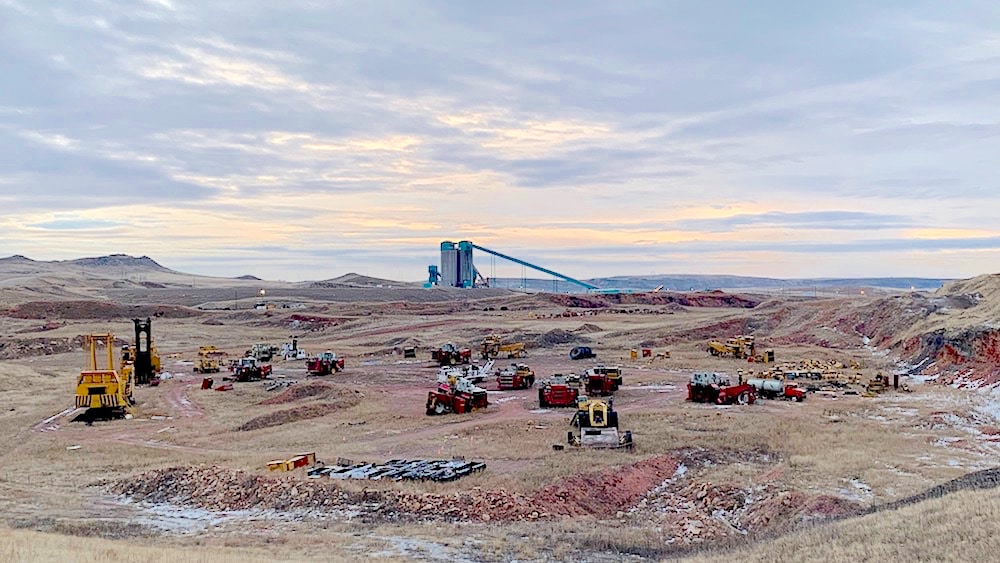
By Dustin Bleizeffer, WyoFile.com
Wyoming’s revenue outlook has improved by $845 million on rebounding markets for coal, oil and natural gas just as lawmakers prepare for the upcoming budget session in February. But there’s a dose of bad news in the state’s revenue analysis.
The wild swing from deficit projections during the 2020 pandemic shock to a more stabilizing revenue forecast today is a function of Wyoming’s outsized reliance on volatile fossil fuel markets, state revenue forecasters say. That fossil fuel volatility — beyond pandemic influences — will only increase as coal cedes its stabilizing state revenue influence to oil and natural gas.
“The current forecast relies heavily on the rebound in oil and natural gas pricing which results in higher [than coal] tax and royalty collections,” according to the Consensus Revenue Estimating Group’s October report. “However, volatility in oil and natural gas markets can reasonably be expected to have an outsized impact on state revenue collections. Coal production is forecast to continue its overall downward trend, despite the current, temporary increase in production and pricing.”
Fiscal year 2021 revenues surpassed a January estimate by $248.1 million, according to CREG’s October report. The group also revised its revenue forecast for fiscal years 2022-2024 upward by $596.9 million. The total of $845.1 million is the amount of money expected to flow into the state’s general fund and budget reserve accounts during that period.
The revenue outlook to fund K-12 schools — which is largely tied to property taxes assessed on mineral production at the county level — also improved through 2024, by $368.3 million.
The revenue rebound is owed to recovering national demand for oil, natural gas and coal, Legislative Service Office Budget and Fiscal Manager Don Richards said. Long-term, however, coal will continue to play a diminishing role in the state’s budget, and that means Wyoming can expect more intense revenue swings as the norm, he said.
“Coal was a very stable revenue source compared to oil and gas,” said Richards, who also serves as CREG co-chairman. “The volatility of natural gas prices and the volatility of oil prices is much more dramatic, and Wyoming’s becoming more reliant on oil and gas because of the structural decline in coal.
“As a result,” Richards continued, “our total revenue portfolio is becoming more volatile, not less.”
One example of the volatility difference between oil and coal, Richards said, is commodity pricing. The price for Wyoming coal — which is bound by U.S. utility markets — fluctuated between about $10 and $13 per ton during the pandemic shock and recovery, while the price of oil — subject to global markets and geopolitics — swug from below $0 per barrel to $80 per barrel.
Industry and state officials also worry about the ability to maintain robust oil and gas production in Wyoming due to increasing federal regulatory scrutiny.
For now, Powder River Basin coal producers are capitalizing on a recovering national economy that’s pushing U.S. electrical demand — Wyoming coal’s lone market. Electrical demand so far this year increased 22% over 2020 levels, according to the Energy Information Administration. However, long-term projections still warn of a permanently declining market for Wyoming coal.
“The downside is we went from 450 million tons [of annual coal production in 2008] down to 200,” House Revenue Committee Chairman Steve Harshman (R-Casper) told WyoFile in October. “That’s going to continue because of the retirement of coal plants, and we sell thermal coal. We’re not going to make it up by building car bodies or something.”
All told, more than 65% of the upward revision in state revenue is “directly attributable to fossil fuels,” Richards said. Only Alaska and North Dakota are more reliant on fossil fuels, he said.
CREG’s revenue revision represents a dramatic turnabout from 2020, when forecasters predicted a budget deficit of $1.5 billion for the 2021-2022 biennium. This time last year, Gov. Mark Gordon had already instituted 10% budget reductions for most state agencies and suggested eliminating 380 state positions.
But improving markets for Wyoming’s fossil fuel industries, combined with the promise of federal funds from President Joe Biden’s American Rescue Plan Act, helped sway state lawmakers during the 2021 regular session from making deeper cuts into budgets.
Despite the state’s continuing “structural” vulnerability to declining coal, Harshman said he hopes lawmakers will hold off from what he considered panicked budget-cutting during the pandemic’s economic shock.
“Who’s going to cut more?” Harshman said. “I want to add stuff back to mental health, substance abuse. We have [among] the highest suicide rates in the entire world.”
Conversely, it’s too early to talk about raising taxes, Harshman said. “What we need to do in Wyoming is smooth this thing out a little bit, and we’ve got to modernize our sales tax.”
CREG, which the Wyoming Legislature relies on for revenue data and analysis to help craft a budget, will further refine its forecasts before the Legislature’s February budget session. Gov. Gordon will submit his budget proposal to the Legislature on Monday.





